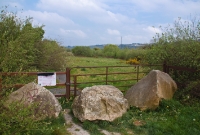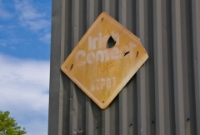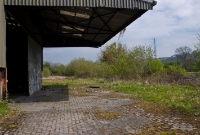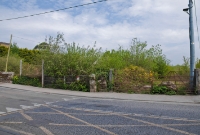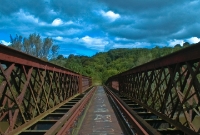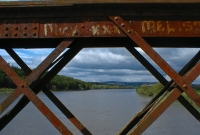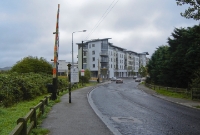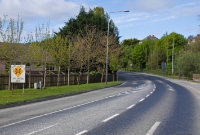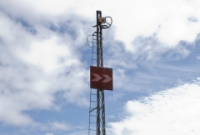New Ross
New Ross, Co.Wexford, which lies on the River Barrow, was first served by rail when the Dublin Wicklow & Wexford Railway opened their September 1887 built Waterford line from Macmine Jct on what is now the Dublin to Rosslare line. In April 1904, the DWWR extended the line south from New Ross to Waterford. Passenger services on the Macmine Jct to New Ross and Waterford line ceased in 1963, but the section from Waterford to New Ross remained in use for cement and fertilizer traffic until 1995. Today, the line remains in situ but very much derelict and overgrown in some sections.
New Ross Station had up & down platforms, with a wooden DWWR station building and signal cabin, complete with footbridge. In 1966, New Ross signal cabin was abolished, with a ground frame controlling the yard from then on. In 1978 a standard CIE cement and fertilizer store was built in the former goods yard and station layout now just consists of a run around loop. The derelict station buildings were eventually demolished in 1997. Today, only the down platform remains. Just north of the town is the old bridge spanning the River Barrow.
New Ross Station had up & down platforms, with a wooden DWWR station building and signal cabin, complete with footbridge. In 1966, New Ross signal cabin was abolished, with a ground frame controlling the yard from then on. In 1978 a standard CIE cement and fertilizer store was built in the former goods yard and station layout now just consists of a run around loop. The derelict station buildings were eventually demolished in 1997. Today, only the down platform remains. Just north of the town is the old bridge spanning the River Barrow.



